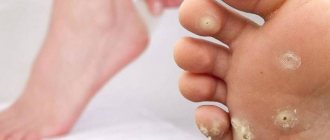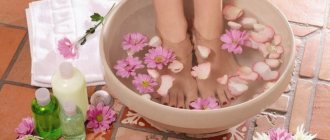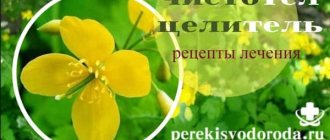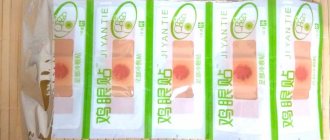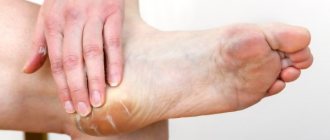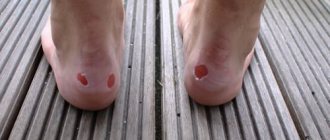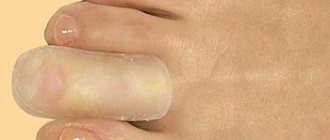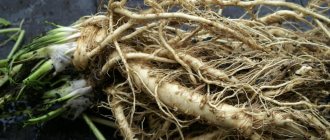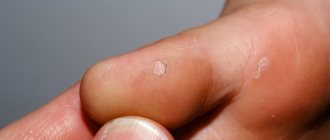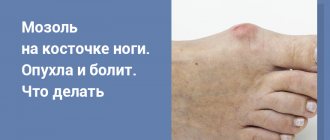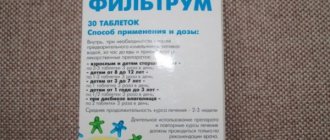Celandine for calluses with a stem on the foot: treatment and removal
Celandine for calluses is rightfully considered one of the best natural remedies. The plant has an antiseptic and antifungal effect, due to which it not only cleanses the skin of growths, but also stops inflammatory processes. You can start treating calluses with celandine at a very early stage, avoiding the coarsening of the epidermis and the development of viruses.
Treatment of calluses with folk remedies
Celandine juice can be used to treat old dry calluses, core formations and wet ones at the healing stage. The remedy also helps against fungal growths. Sometimes a slight burning sensation is felt in the area where the medicine is applied, most often this concerns wet calluses.
Dry growths change color after applying the juice. Acting on the dermis, the composition of the juice has a decomposing effect on dead cells, they soften and begin to exfoliate.
When treating especially dry growths, when removing an ingrown callus, it is recommended to pre-steam the lesion so that the plant juice reaches the infected cells faster and the treatment process is more effective.
Important! It is worth adjusting to the duration of therapy. It will take at least a week to remove small formations. The advantage is the speed of stopping the growth process; even large calluses begin to shrink (peel off) after only 3-4 procedures.
Celandine for calluses is used for all types of formations. Here are examples of some recipes:
- To get rid of rod formations, you should first steam the lesion so that the upper rough layer softens. Then remove the dead cells with pumice and apply a compress of juice, securing the bandage. The compress is applied for a day, then replaced with a new one. Treatment time is up to 5-6 days.
- You can open the callus with the stem, but again only after steaming. The top layer of the dermis is cut off with nail scissors, then juice is dripped into the shaft and the whole thing is covered with a band-aid. Repeat the process once a day for 2-3 weeks. After the specified period, the rod will come out of the skin on its own.
- Fungal formations are also treated with herb juice. The affected area is treated, but care must be taken to ensure that the liquid does not get on healthy skin. As soon as the juice is absorbed, the callus should be treated again. Up to 3-5 treatments per day are allowed, the course of treatment is up to 5-6 days.
- It is very good to use an ointment made from celandine juice mixed with a couple of drops of oregano juice, calendula with the addition of medical petroleum jelly for corns. The mixture is applied overnight and secured with a bandage. Treatment period is up to 10 days. Daily use.
- Treat festering lesions with a paste of celandine leaves, ground in a meat grinder. First wash the leaves and stem, scald with boiling water and dry. Then apply the paste to the hearth, cover with a bandage and secure. Leave for a day.
- It is also a good idea to treat dry calluses without a callus with a pulp from the plant. Mix a tablespoon of the mixture with 1 tbsp. l. baking soda and apply to the callus overnight. In the morning, remove the compress, steam the callus in soapy water and remove the keratinized parts of the skin with a pumice stone. Then lubricate the place of the callus with moisturizing cream and take the treatment procedure again at night. The course lasts until the callus is completely eliminated.
Any calluses can be treated with fresh herb juice, but remember that this is a caustic, poisonous substance with coloring properties. Therefore, it would be useful to take personal protective measures and a rag for dressings (apply on top of a sterile bandage so as not to stain clothes with juice).
How to prepare celandine juice?
To prepare the medicine, both a fresh plant and its dry collection (pharmacy) are suitable. The best time to harvest grass is from May to July. Dried herb can be stored for up to 3 years, fresh juice, properly prepared, for up to 4-6 months. To prepare a decoction of dried herbs, take raw materials and boiling water in a ratio of 1:5, leave in a water bath for 20 minutes and you can use it.
Advice! It is better to harvest the plant yourself, along with leaves and roots, cleared of soil. Before drying, the celandine is washed, dried with a towel and then hung to dry completely. It is important to ensure that the entire plant dries well; if even a hint of mold appears, the affected leaves should be removed.
To prepare a composition from a fresh plant, take a thick stem along with roots and leaves, rinse under running water, cut into pieces and place in a wide-necked bottle. Add boiling water to everything in a ratio of 1:10, let it sit for 5-6 days covered in a cool place - the infusion for foot baths is ready. Keep refrigerated.
Another method of preparing celandine juice will require a little more effort, but you can store it for quite a long time:
- Choose a thick plant, dig it up along with the roots;
- Wash, clean from soil, tear off bad leaves, leave good ones;
- Dry the plant with a towel;
- Pass all parts of the celandine through a meat grinder or grind with a blender;
- Squeeze out the pulp through several layers of gauze (do not throw away the pulp);
- Place the juice in a bottle with a tight lid and put it away for 10 days in a dark, cool place;
- Leave the juice to ferment for 2 weeks, opening the lid every 2 days and releasing excess air;
- Pour the finished fermented juice into another container and store in the refrigerator.
The squeezes can be used as a paste for lotions against dry calluses. It is best to mix them with a small amount of soap shavings, a pinch of soda and dilute with warm water to a paste. This composition removes dry calluses, papillomas very well, and softens core black calluses and other growths.
Preventive recommendations
Prevention of calluses is a necessary and useful thing. The use of celandine juice is not always possible. For example, if there is intolerance to the components, age up to 3 years (the juice is very poisonous and toxic). A few simple tips will help get rid of calluses on your feet and hands:
- Wear comfortable shoes;
- Keep your hands and feet clean;
- Change socks and stockings more often;
- Use orthopedic insoles, especially for overweight people;
- Do not overdo it with high heels and low platforms - both of them lead to the formation of corns and black calluses;
- Treat fungal infections, skin lesions on the legs and arms, preventing the development of infection;
- Carry out timely treatment for excessive sweating on the soles of the feet and palms of the hands;
- Protect your hands with gloves and your feet with socks during any type of physical work or sports.
Remember that calluses often have a fungal or infectious basis, so it is important to monitor your immunity. Almost all types of calluses can be avoided if you periodically examine the body for lesions and injuries.
Even a small splinter on the finger can provoke a black callus - the foreign body will grow into the skin, a focus of hardened dermis will form around it, and the core of the callus will grow quite deeply.
The result is unpleasant pain when walking and long-term treatment.
Rate this publication: Loading...
Source: https://IDermatolog.ru/obrazovaniya-na-kozhe/primenenie-chistotela-ot-sterzhnevyx-mozolej.html
Baths
With hydrogen peroxide
- To soften rough skin on the feet, take 1 liter of not too hot water and add 2 tablespoons of peroxide.
- Feet should be kept in the bath for 15-20 minutes, after which the dry skin is removed with a pumice stone, and cream is applied on top.
This procedure can be repeated until the growth is completely eliminated.
From whey
A whey bath works well with cracks and growths
- The whey is preheated to 40 degrees.
- Feet should be kept in it for 25 minutes.
- Then rinse with water, use nourishing cream and put on a sock to keep warm.
- Repeat the procedure once a week until the corns are completely eliminated.
With mustard
- For 2 liters of water add 2 tbsp. mustard.
- The water should be moderately hot so that it can steam the callus on the toe, after which the top layer is removed with a pumice stone.
How to remove dry callus? The course of treatment is carried out individually. Baths should be done until the callus completely disappears.
With laundry soap
- Laundry soap is grated on a grater.
- Tbsp. grated soap dissolves in a liter of water.
- The water should be at a temperature of 37°C.
- The bath is taken for half an hour, then the steamed callus is also removed with a pumice stone, and baby cream is applied to the place where it was.
With sea salt
Foot baths can be taken with sea salt . It works quite effectively on the feet to get rid of corns.
With baking soda
- 1 tbsp dissolves in hot water. liquid soap and 3 tablespoons of baking soda.
- Soda can be replaced with mustard powder.
- Feet are steamed for 30 minutes.
After your feet have been steamed in the prepared bath, you can try to remove the callus by gently pulling it by the cap. It may not work out the first time, but you shouldn’t put in much effort. It is better to repeat the procedure again.
Remedy for calluses and corns LLC
Hello, dear reader!
Today I will share my experience in dealing with such an unpleasant phenomenon as calluses.
I am a professional nail technician and I have something to tell you.
What is a callus?
SM is a dense formation with a rod that goes deep into the skin. Typically, the callus has a voluminous cap on top (this is hyperkeratosis).
Before drilling
SM manifests itself not only as an unaesthetic appearance, but also as pain when walking. And this is a serious objective problem that needs to be solved. And the “Ballus” remedy will help us with this.
Why do SMs appear?
1.The most common reason is uncomfortable shoes. Too tight shoes or poor quality material contributes to the growth of SM.
2. Skin damage by fungal or viral agents. Very often SM comes complete with modified nails.
3. Increased sweating of the feet, etc.
How to get rid of SM?
- Laser removal. But! The price and subsequent painful rehabilitation.
- Drilling in a pedicure room.
- But the most important thing!!!! Get rid of the root cause. Either the shoes are uncomfortable, or it’s a fungus... but you need to get rid of it. Otherwise, this problem will never leave you.
I'm for the second option.
No pain, no blood - the SM has no vessels and no nerves.
Quickly - one callus will take about 10 minutes, of course, from an experienced specialist.
No rehabilitation – unlike laser removal.
It is almost impossible to remove such a callus yourself, so do not waste time, but contact a specialist. But you can avoid the appearance of SM yourself.
Means CALL
Volume 15 ml
Manufacturer – Russia
Shelf life – 2 years
Price – up to 150 rubles
The price is ridiculous, but the same cannot be said about the results
Source: https://irecommend.ru/content/otzyv-dlya-lyudei-stradayushchikh-sterzhnevymi-mozolyami-algoritm-borby-s-mozolyami-laifkhak
Celandine for corns and dry calluses with a rod: application, recipes
Corns not only spoil the appearance of the feet, but also cause physical discomfort to the owner. You can get rid of them in various ways. Celandine and products based on it are used as one of the most effective folk medicines for corns.
Reasons for the appearance of rough areas
The first stage of corns formation often goes unnoticed. They develop gradually under the influence of external factors. The reasons that provoke their occurrence, dermatologists primarily include:
- regularly wearing high-heeled shoes (the main body weight falls on the front of the foot),
- incorrectly selected shoes (larger or smaller size),
- insoles with defects (they gather in folds),
- thin sole, unable to protect the foot from uneven surfaces and stones.
The following are minor factors that increase the risk of corns:
- excess weight, which creates increased pressure on the legs,
- circulatory disorders in the vessels of the lower extremities - lack of nutrition leads to faster roughening of the skin,
- fungal diseases, the symptom of which is hyperkeratosis (thickening of the stratum corneum of the epidermis),
- specifics of work or hobbies - corns often occur in runners, ballerinas, rock climbers.
Features of the use of medicinal herbs
Celandine is a plant with potent properties due to the content of alkaloids in its juice. Among them, the main one is chelidonine, which in high concentrations has a toxic effect on the human body.
In addition to alkaloid compounds, the plant contains organic acids that have an irritating effect on the skin. Thanks to these groups of substances, celandine is effective in the fight against corns and other benign formations .
It must be remembered that if juice or highly concentrated elixir from a fresh plant comes into contact with healthy skin, celandine causes burns and irritation.
And if the amount specified in the recipe is exceeded (with other methods of use), there is a risk of poisoning. Therefore, when using celandine to get rid of calluses and corns, it is important.
Follow the recipe and apply thick cream or Vaseline to healthy areas to protect them.
Harvesting the plant
In order for the herb to retain its medicinal properties throughout the year, it is necessary to properly prepare the raw materials obtained from it.
Celandine is collected only during the flowering period, which lasts from May to the end of June. In this case, it is better to choose specimens growing far from roads and industrial enterprises.
This medicinal herb can be used in many ways, so it is prepared accordingly:
- in dry form - the above-ground part of the plant is cut off at a distance of 10 -15 cm from the ground for further drying,
- in fresh form - the celandine is dug up entirely, along with the roots, and washed in cool running water.
The raw materials should dry in a well-ventilated place, not exposed to direct sunlight. It should be spread in a thin layer on a surface that does not create a greenhouse effect (on paper, plywood). During the drying process, it is necessary to regularly turn the raw material to prevent it from rotting .
Fresh celandine should be used immediately or an extract should be made: the juice of the crushed plant is diluted with alcohol in a ratio of 2:1.
Workpieces can be stored:
- dry grass - 3 years,
- extract - 1 year.
Recipes
Traditional medicine offers many options for using celandine. They help with both corns and calluses with a core. But in order for the recipes to be effective and not cause harm to the body, it is important to follow the recommendations for their use.
Removing skin growths with plant juice
Celandine juice can be used both fresh and canned as an alcoholic extract. They are used to precisely lubricate the problem area 1-2 times a day. The product should be applied daily for one to two weeks.
For best results, it is recommended to regularly take warm foot baths and remove dead tissue with pumice.
The juice has a bright color and is difficult to wash off from things. Therefore, you should use it in the evening before going to bed, putting thin cotton socks on top.
To get fresh juice, just cut or break the stem of the plant - drops of bright orange liquid will appear. It must be used immediately.
Infusions
An infusion is prepared from celandine according to the following scheme:
- From dry raw materials. 1 tablespoon of chopped herb is poured into a glass of water. Leave in a water bath for 15 minutes, then leave for half an hour to allow the liquid to cool.
- From a fresh plant. The aboveground part of the celandine and its root are washed and cut into pieces, the length of which should not exceed 1 cm. The mass is poured with boiling water in a ratio of 1: 1. Placed in a thermos until completely cooled or in a water bath for 15-20 minutes.
Infusions are used for foot baths (200 ml of product per 3-4 liters of warm water). The procedure softens rough areas and also has an antiseptic effect.
The frequency of baths depends on the size of the corns. Typically, to remove small defects with a shallow degree of damage (without a rod), 10 sessions are required, carried out every other day.
Ointment
At home, you can prepare an ointment that is used in the same way as fresh juice - applied to the affected areas. To make it you will need:
- Vaseline cosmetic or fat - 4 g,
- dried celandine, crushed to powder - 1 g.
The components are thoroughly mixed so that the herb is evenly distributed in the base. After preparation, the ointment is stored in the refrigerator for no more than 2 weeks, as there is a risk of mold appearing on it. The number of ingredients can be increased, the main thing is to maintain the proportion: 4 parts Vaseline (fat) to 1 part celandine.
You can also use plant juice or extract to prepare an ointment..
Compresses
For lotions, it is better to take fresh grass. It is crushed into a pulp, optionally wrapped in gauze and applied to the corn. Fix the top with film and put on a sock. The compress is made at night, after steaming the problem area.
The next morning, it is removed and the stratum corneum is removed using manicure tools. To facilitate the process, you can make a warm bath with a soda-soap solution. The procedure is carried out daily until the formation is completely removed and takes an average of 7-8 days.
Rules for using Supercleaner
In the pharmacy you can find the product Superclean. Despite the name, the drug does not contain the plant extract and is in no way related to it. It contains a strong alkali, which burns tumors on the skin.
Supercleaner is sold without a prescription and is intended to remove:
- warts,
- papillomas,
- dry calluses with a core,
- small size corns.
Since the liquid is highly corrosive, it must be used with extreme caution. Baby fat cream should be applied to healthy tissue around the defect and only after that the product should be used.
The solution is applied 1 drop for 5 days. Complete death of the formation is observed 5-7 days after the start of treatment.
Super cleanser should not be rubbed into the skin. It is applied pointwise and left until completely absorbed, often causing acute but quickly passing pain.
If it comes into contact with intact areas of the skin, the liquid must be immediately washed off with water - this must be done within 10 minutes. This area is then treated with a weak acidic solution (water with a few drops of vinegar or lemon juice added).
Contraindications
The celandine plant is not approved for use in all cases. First of all, before using it, you need to make sure that the neoplasm is benign. To do this, it is recommended to visit a dermatologist. Also, celandine-based products are contraindicated for:
- presence of damage in the application area,
- pregnancy,
- lactation,
- skin diseases of unknown origin.
Celandine is a plant with unique properties. It gets rid of many blemishes on the skin. But removing corns using folk recipes based on it requires patience. The result of their use will be noticeable only after a series of procedures.
Source: https://fr-dc.ru/kozhnye-zabolevaniya/travmy-kozhi/reczepty-ot-natoptyshej-na-osnove-chistotela
Compresses
- Feet with corns are steamed every day for a week. Then a lemon peel with pulp is applied to the sore spot and bandaged. When the lotion is removed, the exfoliated skin is removed with a pumice stone. The acids contained in lemon can soften rough tissue.
- In addition to lemon peel, you can use grated onion gruel for a compress. After application, the leg is wrapped in cellophane, and a sock is put on top for fixation. In the morning after waking up, the feet are washed, the keratinized skin is removed with a grater or pumice stone.
- Prunes are boiled for 15 minutes in a glass of milk. Then cool and knead into a paste used for compresses.
- Potato peelings are ground in a blender. Then the pulp is wrapped in gauze and attached to the corn before going to bed. In the morning, the problem area is treated with an abrasive.
- A compress can be made by mixing garlic with lard.
- One of the most effective remedies against calluses is considered to be a celandine compress. Fresh celandine is crushed into a paste and applied to the affected area of skin at night. The procedure should be repeated 5 times. The gruel will relieve pain and promote the regeneration of damaged tissue.
- If celandine is not at hand, aloe leaves cut in half can successfully replace it. They are applied to the callus with the side from which the juice flows, then the leg is wrapped in cellophane, a bandage is applied on top and a warm sock is put on. Before using aloe, it is better to keep it in the refrigerator. Apply at night, remove in the morning and remove damaged skin.
- Propolis can also be used as a compress. It is pre-kneaded and applied to the problem area.
- Thoroughly chewed bread crumb is soaked in vinegar. Apply to the leg at night, and repeat the procedure in the morning.
- A compress of grated tomatoes will also be useful. It is used in the same way as all the above-mentioned means.
To prevent this, a hole the size of a callus is cut in the patch. itself is glued to the leg, and a compress is applied on top . Healthy skin will be protected, and the compress will directly affect the problem area of the skin.
- Vinegar.
Mix 1 tbsp. vinegar (70%) with 1 tbsp. vegetable oil and 1 raw egg.
The resulting mass should stand in the refrigerator for at least a day.
Use for at least 5 days. Vegetable oil.
You can use regular vegetable oil as an ointment.
After applying it to the callus after taking a hot bath, it is better to wear warm socks on top.
This simple method will help soften the growth and reduce its size.
Vinegar essence.
You can also use vinegar essence for lubrication.
Healthy skin is protected with an adhesive plaster, and the callus itself is smeared with vinegar.
The procedure is repeated daily until the callus is gone.
It is recommended to use nail scissors to remove loose callus skin. They must first be disinfected.
Celandine for corns and calluses with a rod
Celandine for calluses is a proven remedy that has long been used to soften dead skin. It has pronounced bactericidal properties, therefore preventing infection and inflammation. To get the maximum effect, you need to properly prepare the plant and strictly follow the instructions during the treatment process.
Causes of dry calluses
Horny areas on the feet form gradually.
The main cause of calluses is considered to be uncomfortable shoes that squeeze the toes and do not allow air to pass through.
Increase the risk of developing pathology:
- walking in high heels;
- thin sole that poorly protects the feet from injury;
- wearing socks made of artificial materials;
- excess weight;
- endocrine diseases;
- impaired blood circulation in the lower extremities;
- flat feet;
- increased sweating of the feet;
- fungal infection.
People who do physical labor and athletes are more likely to develop calluses. Excessive stress on the feet causes friction and compression of the skin. As a result, the outer layer coarsens, becomes hard and rough.
Features of the use of celandine
Celandine is a perennial plant. Its stems and leaves contain yellow-orange juice, rich in:
- tannins;
- carotene;
- organic acids;
- essential oil;
- saponins.
The composition contains alkaloids, which in large quantities have a toxic effect on the body. You should strictly adhere to the recipe to avoid poisoning.
Celandine juice contains a high percentage of citric, malic, and ascorbic acids.
These substances provide a keratolytic effect, soften keratinized skin, but can damage healthy epidermal cells.
To prevent burns, it is important to apply medications prepared from celandine locally. The skin around the callus should be lubricated with Vaseline or zinc paste .
Preparing juice
Celandine juice quickly helps with calluses. You can prepare it for future use:
- Fresh stems and roots are thoroughly washed and moisture is shaken off the leaves.
- Scroll everything together through a meat grinder. Squeeze the juice through cheesecloth into a glass jar and seal it tightly.
- Place the container in a dark place. After a week, the product begins to ferment. The lid must be opened regularly to release accumulated gas.
- After a month, fermentation ends. The juice should be strained and stored in the refrigerator. Use within six months.
You can prepare an alcoholic elixir. To do this, the squeezed juice is mixed with alcohol in a ratio of 2:1. Cover with a lid and place in the cellar for 3 weeks. Then it is filtered and used for treatment throughout the year.
Removing growth with juice
An easy way to remove calluses is with fresh juice. You should break off the stem and apply orange liquid to the keratinization. When it dries, repeat the treatment. Treatment should be carried out 3-5 times a day until the skin clears. In winter, prepared elixir is used.
It should be remembered that the plant contains a pigment that leaves permanent stains on clothes and turns the epidermis brown. During the treatment process, it is important to be careful and wear cotton socks after treatment.
Infusions and decoctions
Decoctions and infusions for corns are useful for foot baths:
- To make a decoction, you need to pour boiling water over the plant in an enamel bowl at the rate of 1 tablespoon of dried raw material per 200 ml. Place in a water bath and heat over low heat for 15 minutes. Then turn off and cover the broth with a towel. After an hour, strain.
- The infusion is made differently. Two spoons of dry raw materials are placed in a half-liter thermos in the evening and filled with boiling water. In the morning, filter and cool.
The decoction or infusion is diluted with hot water in a ratio of 1: 3 in a wide basin. Place the foot in the bath and hold for 20-30 minutes. Then wipe and clean the softened calluses with pumice. The procedure has an antiseptic effect, soothes pain and irritation.
Contraindications for use
The use of celandine, like any medicine, has warnings before starting therapy. It is contraindicated for treatment in the following conditions:
- period of pregnancy and lactation;
- epilepsy;
- complex mental illness;
- bronchial asthma;
- angina pectoris;
- individual intolerance to components;
- presence of open wounds.
A highly effective and proven product that grows in any garden. It is important to prepare the medicine correctly, taking into account the number of components and shelf life. The use of celandine should occur after consultation with a doctor.
Celandine for dry calluses with a stem and corns on the feet
Calluses on the feet are a common dermatological problem that creates discomfort when walking. When wearing open summer shoes, this is also a noticeable aesthetic defect.
Constant friction and squeezing provoke the appearance of hard seals on the skin.
In folk medicine, celandine with a rod has long been used for calluses, helping to cope with the most complex formations that are difficult to treat and remove.
Types, localization, causes of development of corns and calluses
With regular trauma to the surface of the epidermis, a hard top layer is formed, which acts as a protective reaction to irritation and protects against deeper damage.
Wearing new or ill-fitting shoes, work associated with constant stress on the feet, lead to the formation of calluses.
Additional risk factors include a lack of vitamin A, endocrine disorders in the body, pathologies of the blood circulation and joints, and fungal infections. Corns appear on the heels, soles and toes.
Friction and pressure cause necrosis of the cells of the stratum corneum of the skin, which, due to the intensity of the process, do not have time to exfoliate and be removed. The consequence of this is the accumulation of dead particles and compaction of the epidermis. When playing sports or heavy physical labor without special gloves, calluses appear on the palms and fingertips.
Depending on the structure, the following types of skin formations are distinguished:
- wet - painful blisters filled with liquid transparent exudate, acquiring a red tint if the capillaries are damaged, susceptible to infection if the membrane is damaged;
- dry - localized roughness and thickening of the skin that does not cause significant discomfort;
- rod (corns) - have a depression in the central part; when the rod grows deep into the tissues, they affect the nerve endings, lead to the appearance of cracks and cause pain.
In the absence of proper treatment and care, some types of formations develop into others, becoming a serious problem and interfering with normal walking.
The most difficult callus to remove is the callus: even if the surface formations are removed, but the “root” particles remain, it will definitely appear again. To recognize the corns, you can look at the photo below.
If the callus becomes bluish and bleeds, this may be an indirect symptom of diabetes.
Features of the treatment of calluses and corns with celandine
Popularly, the antiseptic and anti-inflammatory properties of the medicinal herb are used to remove acne, warts, papillomas, and corns. The natural organic acids and alkaloids contained in the plant destroy the affected epidermal cells and prevent their further growth. Vitamins help speed up skin regeneration.
Celandine is effective against dry and core calluses, and when treating fresh blisters with products based on it, the risk of infection and the development of inflammation is minimized. When removing old corns, biologically active substances, penetrating deep into the dermis, stimulate the process of softening and exfoliation of dead cells.
It is first recommended to steam and treat the skin with a pumice stone or brush, which will enhance the effect of the celandine. To avoid burns to healthy areas of the epidermis, it is advisable to cover them with a thick cream or seal them with an adhesive plaster. The product should be applied pointwise to the callus.
For the procedures, juice, fresh leaves and stems of the plant, decoctions and infusions from dry raw materials or pharmaceutical preparations with medicinal herb extract are used.
How to prepare celandine for preparing medicinal products
The optimal collection time is the flowering period, which lasts from May to the end of June. Leaves and stems are used for drying, cutting off the above-ground part of the plant at a distance of 10-15 centimeters from the ground. If a recipe uses fresh herbs, remove them by the roots and rinse thoroughly with cold water.
Dry the celandine by hanging it in a shaded, well-ventilated place, or spreading it in a thin layer on paper and turning it regularly to prevent rotting. When the stem breaks and does not bend when bent, the raw material is ready.
It is poured into linen bags or cardboard boxes and stored for up to three years in a cool place protected from moisture.
Fresh celandine is used for infusions, compresses, and juice extraction. To prepare a plant extract, fresh stems and leaves crushed in a blender are squeezed out using gauze and the resulting liquid is diluted with alcohol in a ratio of 2 to 1. In this form, the solution retains its beneficial properties throughout the year.
For canning, freshly squeezed juice is poured into a sealed container and allowed to ferment for 7–10 days. The lid is lifted regularly to allow any accumulated gas to escape. After this, the bottle is placed in the refrigerator.
With proper and careful use of products with celandine, it is possible to cure all types of calluses.
Pharmacy drugs
For those who do not have the time or opportunity to independently collect and prepare raw materials, the following medications are offered:
- elixir “Mountain Celandine”, produced using plant juice and a complex of Altai medicinal herbs;
- ointment "Plantazin B" with carbolic acid, petroleum jelly and extract from leaves and stems;
- alcohol tincture;
- herbal mixture for decoctions;
- “Clandestine” ointment with the addition of medicinal plant extract;
- an oil made from powdered stems and leaves.
According to consumer reviews, the drug “SuperClandestine” effectively helps remove corns. Despite the name, it contains only distilled water and sodium and potassium hydroxides.
To combat dry growths, callus plaster is also used.
Before removing any formations, you should carefully read the instructions for the purchased products and use them using appropriate precautions.
Recipes with celandine for calluses
Traditional medicine and herbal medicine offer various ways to use celandine to help with corns with a stem and other types of calluses. When using homemade products, it is important to strictly adhere to the recommended proportions and dosages. The plant is poisonous and can cause burns and skin irritation.
Juice
The stem of fresh celandine is cut to release a drop of orange substance. After steaming and treating the callus, the liquid is applied to the callus daily for 7–14 days. Pre-prepared juice or extract of a medicinal plant is also used.
Prevention of core formations
Treatment of calluses with roots going deep into the tissue is a long process. In the event that it is not possible to cope with them at home, removal is required using a laser, liquid nitrogen, or drilling the rod with a special tool in a clinic. Following a number of rules will help prevent the appearance of these painful formations:
- do not allow watery calluses, wounds, fungal and viral skin lesions to appear, immediately treat all damage and treat infections;
- wear comfortable shoes made of natural materials, reduce the time spent in heels;
- wash your feet daily with soap, change your hosiery regularly;
- treat the feet with special files and pumice, use a softening cream;
- give preference to socks made of cotton fabric;
- use special means to combat excessive sweating;
- if joints are damaged or gait disturbances, purchase orthopedic insoles and inlays, order special shoes;
- For heavy physical work and sports, use protective gloves.
In diabetes mellitus, the formation of dry calluses is associated with the symptoms of the underlying disease. Damage to blood vessels, circulatory disorders and decreased tissue resistance lead to cracking of the skin and penetration of pathogenic microflora.
To cope with this problem, special attention should be paid to normalizing blood glucose levels and maintenance therapy. In this case, removing the callus with celandine will be effective only when the root cause of the appearance of the formations is eliminated.
